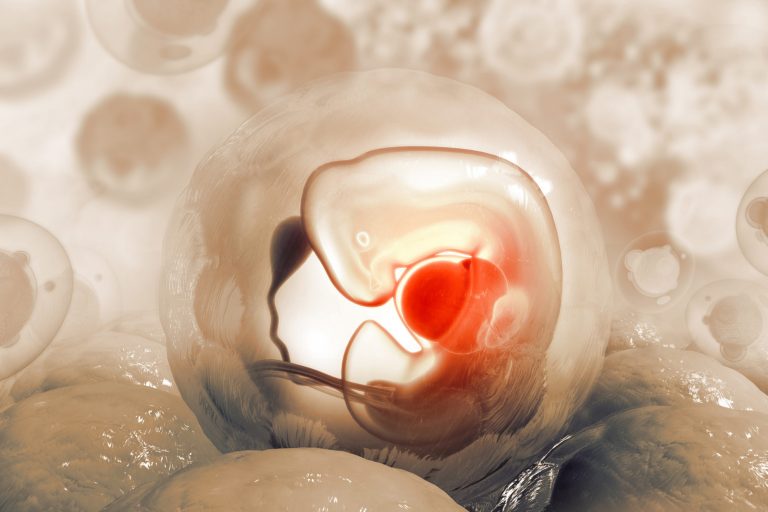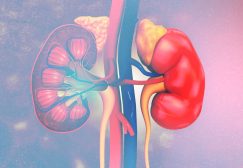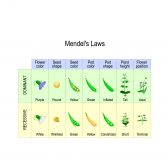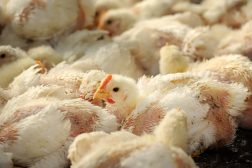Growth and Development of a Human Baby

An artistic depiction of a human embryo
Table of Contents
Continued from the initial human reproduction of the previous page in this tutorial.
Upon arrival in the uterus, the zygote fuses itself to the uterine wall. At this point, cells of the zygote differentiate into two distinct types
- Embryoblast Cells – These cells continually divide into what will become the embryo, the baby itself
- Trophoblast Cells – These cells form the placenta, that form against the uterine wall
The Placenta
The placenta is the life support machine of the developing embryo, providing oxygen and food for it and removing toxic material and CO2 from the developing embryo. The umbilical cord, a connection to the mothers’ bloodstream is responsible for this.
The Embryo
By the end of the third week, this placenta provides a rich source of nutrients for the unborn baby that now is roughly the size of this letter o….
Towards the end of the first month, the heart starts to form while designated cells begin to form the basic structure of the limbs, spine, nervous and circulatory systems. After the initial formation of these major bodily areas, less essential characteristics begin to develop such as the eyes, ears, and nose.
By the tenth week of pregnancy, these facial characteristics become recognizable, and the overall silhouette of the embryo now resembles that of a human.
By the fourteenth week, all the major characteristics of the embryo have more or less developed, and possesses all the requirements of a fully functional being.
From this time onwards, the embryo will continue to grow in size rather in complexity via cell division. Forty weeks later, nine months since fertilization, the embryo, now in the fetal stage is mature enough to enter the world.
The next tutorial goes through the stages of birth, where the mother’s body has to adapt to the harsh conditions of birth…
You will also like...

Kidneys and Regulation of Water and Inorganic Ions
The kidneys are responsible for the regulation of water and inorganic ions. Read this tutorial to learn about the differ..

Mendel’s Law & Mendelian Genetics
One of Mendel’s law of inheritance is the “law of dominance”. Read this tutorial to know more about this form of i..

Leaves
Leaves are the major photosynthetic organ of a plant. Apart from that, they are also crucial to water movement. In this ..

Plant Cells vs. Animal Cells
Plant cells have plastids essential in photosynthesis. They also have an additional layer called cell wall on their cell..

The Origins of Life
This tutorial digs into the past to investigate the origins of life. The section is split into geological periods in the..

Selective Breeding
Gregor Mendel's studies into Monohybrid and Dihybrid crossing and Charles Darwin's study of evolution and natural select..
